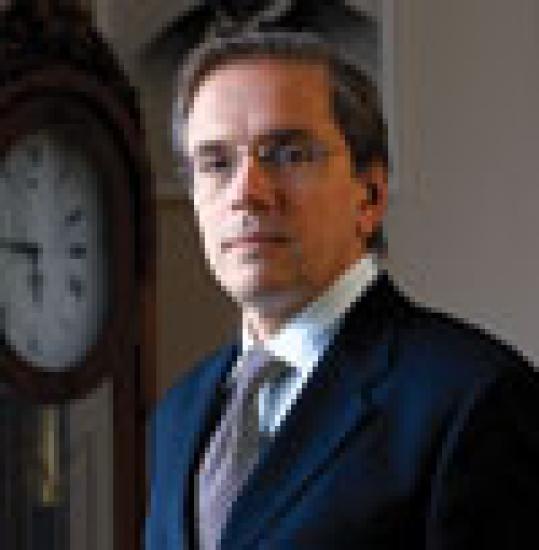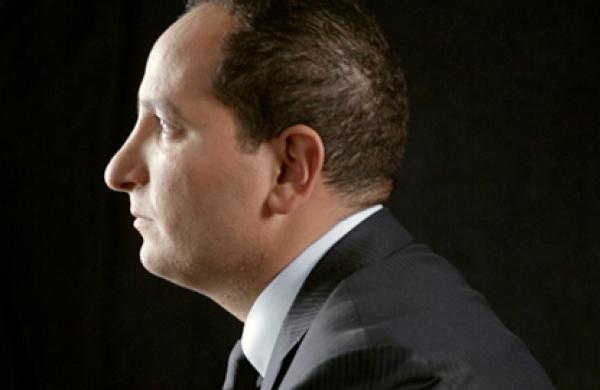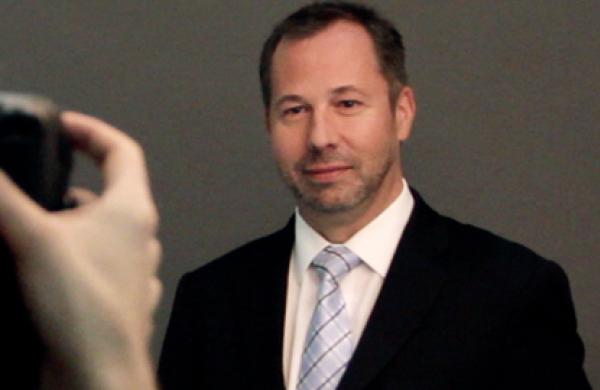Among the rof the world’s new sovereign wealth elite, few can match the meteoric ascendance of Russia. The country was literally bankrupt a decade ago after defaulting on its government debt and suffering the hemorrhage of tens of billions of dollars of capital. Russia’s economic plight mirrored the country’s fall from superpower status after the collapse of the Soviet Union at the start of the 1990s.
Today, Russia is enjoying a dramatic resurgence of its economic and political might, a fact that Western governments — and markets — are only beginning to grapple with. The relentless climb in oil prices from less than $10 a barrel at the end of the ’90s to a peak of nearly $150 this summer has restored Russia’s wealth. The country has earned roughly $1.3 trillion in oil and gas revenues since the start of this decade, foreign reserves have swelled to more than $600 billion, and the Bank of Russia has been struggling to contain upward pressures on the ruble.
Increasingly autocratic decisions by the government of Prime Minister Vladimir Putin have cast a cloud over this picture of financial health, however. Putin triggered a sharp sell-off in Russian stocks in late July by accusing steel and mining company Mechel of profiteering and demanding an antitrust investigation of its pricing policies. The surprise announcement hit a market already reeling from the departure of the American CEO of U.K.-Russian oil company TNK-BP, Robert Dudley, who was forced to leave the country when authorities refused to renew his visa. Russia’s military incursion into Georgia in early August has caused an even bigger market shakeout.
The turmoil has given Russia a unique status among the world’s emerging-markets countries. Although its economy is powering ahead with a growth rate of nearly 8 percent and oil revenues continue to flood in, foreign investors have fled en masse because of heightened perceptions of political risk. Russia’s RTS stock index plunged by 32 percent from June to the end of August, leaving the market trading at just under seven times expected 2008 earnings, the lowest multiple among major emerging markets.
“Essentially, this country is only eight years old. It’s struggling to build its bureaucracy, its infrastructure and its laws,” says Chris Weafer, chief strategist at Uralsib Financial Corp. in Moscow, adding that recent turbulence “reminds us how fragile the whole base is.”
Events of late have injected new urgency into the long-running battle within the government between the so-called siloviki, a group of former security and military officers, such as Igor Sechin, the deputy prime minister for energy and industry, who seek to reassert the state’s authority, and economic reformers, led by Deputy Prime Minister and Finance Minister Alexei Kudrin, who want to pursue market-oriented policies and increase Russia’s integration with global markets.
A key issue in this struggle is what to do with Russia’s oil wealth. In recent years Kudrin has largely succeeded in setting aside surplus oil earnings in a stabilization fund in a bid to contain inflation, now running at about 15 percent. That money was split earlier this year into a Reserve Fund, which is a rainy day fund for potential budget crises that currently holds about $125 billion and will be capped at 10 percent of GDP, and a National Welfare Fund, a $32 billion pot that is supposed to be invested abroad for future generations.
Deputy Finance Minister Dmitry Pankin, who oversees the two funds, is due to present a proposal by next month for using external firms to manage the Welfare fund. He has his work cut out for him. Many Russian politicians and state-owned companies want to use some of that wealth at home to finance badly needed infrastructure investments and other projects. The recent market tumult, which has made it more difficult for Russian companies to get financing, is likely to increase the pressure.
In an interview at the ministry’s central Moscow office earlier this summer, Pankin discussed the country’s economy and his vision for its new sovereign wealth fund with Institutional Investor International Editor Tom Buerkle.
Institutional Investor: Give me a brief snapshot of the Russian economy. How strong and sustainable is growth?
Pankin: Generally, our situation is rather good. In the short term the economy is rising by more than 8 percent in real terms. Our volume of exports is rising due to very high oil and gas prices. Consumer demand is growing, and this year we have a rather positive development in our manufacturing industry.
But there are, of course, some problems. The biggest problem we have now is inflation. Last year we had about 12 percent inflation; the official target is 10.5. If I take May 2008 over May 2007, it’s 15. And it’s a very unpleasant situation. It’s necessary to make very strong efforts to reach the inflation target. So this situation is volatile.
Many people in the markets believe that Russia needs a stronger currency to help contain inflation. Should the central bank and the government allow the ruble to strengthen?
That’s a very difficult question, because there are some advantages and disadvantages of such a strong currency. In the short term maybe it would help to have a very strong currency. But at the same time, it would be very difficult for our manufacturing industry to compete, and in the medium and long term, it would be a loss of competitiveness for many sectors. So it’s a rather dangerous policy.
The art is to find the right balance between the need to keep inflation down and to not destimulate production and manufacturing. [There is] limited room for currency appreciation.
What role has the stabilization fund played in recent years to contribute to financial stability, and how important are those reserves for Russia?
I think it was a completely right decision to start these funds, and they played a very positive role in many cases. Russia now has much more credibility and no question about financial stability. There is much more trust for banks, for institutions.
From the internal side, it’s very important to channel this additional oil money into this fund and not to take this money inside the Russian economy because the economy is overheated, and additional money will just keep inflation not to 10 or 15 percent, but to maybe 30 or 40 percent. It would be a very dangerous situation from a macroeconomic point of view.
Where is the ministry’s work on coming up with a plan for managing and using the Welfare Fund?
This year we transformed the stabilization fund into two funds: the Reserve Fund and the National Welfare Fund. The Reserve Fund is more risk-free. It’s going to be about 10 percent of GDP. This fund will help to mitigate some stress in the economy, some stress in the budget. It will be invested in government bonds.
The National Welfare Fund is the more interesting story because we think that it is kind of a heritage for future generations. It’s more long-term investment. And as everybody knows, for a long-term fund, buying different types of assets — like shares or bonds, maybe some derivatives — will provide more return with the same level of risk. It’s justified in such an environment to invest part of the money in shares and, in that case, to create a structure to work with such money. We think the right structure will be a kind of financial agency. We hope the government will approve our proposal, maybe in September. And, of course, it will be necessary to work with external managers. It’s not a question that this agency will manage all the assets by itself.
There are a number of sovereign wealth funds out there. Which are you looking at? What kind of model would you like Russia to have?
We are looking very closely at such funds. We are working with the Norwegian fund, with Singapore, with Abu Dhabi. Yesterday my colleague returned from Alaska, working with the Alaska fund. I cannot say that we will take just one model and implement in Russia the Norwegian system or the Singaporean system. It’s necessary to understand how things are going and to create our own system.
Do you envision the Welfare Fund taking strategic stakes in big companies, or do you see it more as a portfolio investor?
We think that it’s necessary to develop and manage the structure very gradually. Now we have only government bonds. Step by step we could add corporate bonds, portfolio investment in shares. And I think that at first, portfolio investment would be enough. Direct investment is more serious, more risky.
Is your view informed by some of the investments that other sovereign wealth funds have made in banks, which are down 20, 30, 40 percent?
Of course. We have a study, and practically all direct investments done by these funds bring financial losses up to now. But this doesn’t mean that it’s impossible to do such investment. It means only that these investments are more risky.
Do you have a time frame in mind for this gradual move from government bonds into corporate bonds and equities?
I think it would be possible to start rather soon to gradually move from bonds to shares. But it doesn’t mean in one day. First, it’s necessary for us to create a structure, to find the right people to work in this area, to work with external managers. And then maybe to shift 10 percent of the National Welfare Fund to a share portfolio.
There’s a push in Western countries and at the International Monetary Fund to come up with a code of conduct for sovereign wealth funds. Are you optimistic that something can be done, and is Russia willing to play a constructive role in that kind of conversation?
We are working very closely with the IMF. There was a change in perception and approach. At the beginning there was some expectation that the IMF or somebody else would like to create some kind of rules for sovereign wealth funds. Russia was not very happy. Why should the IMF provide such rules? Why only for sovereign funds? Why not for other financial vehicles and financial institutions? Now the situation has changed. We are not talking about rules. We are talking just about best practice. The idea is to analyze the situation and the principles of management in different sovereign wealth funds and to provide a report. We will study the examples and make some recommendations about transparency, the level of disclosure, management structures, reporting systems, governance. And I think that’s a reasonable approach.
Going forward, what is the role for foreign investors in Russia? Are there steps that the ministry can take to improve the climate for foreign investment?
As a Ministry of Finance, our biggest job is to provide macroeconomic stability. If we have macroeconomic stability, it means that the country will be very interesting for foreign investment. You are right that there are some discussions [about whether] foreign investment is less welcome now, but if we analyze statistics, we see the volume of investment is rising dramatically each year. And all Russian officials — the president and prime minister — repeat that we are interested in foreign investment. We think that Russia is part of the global economy, and, in that case, it is very important that foreign investment comes to Russia and starts businesses here. And it’s very important that Russian companies go to Western markets and start investment abroad. It should be a two-sided process.






